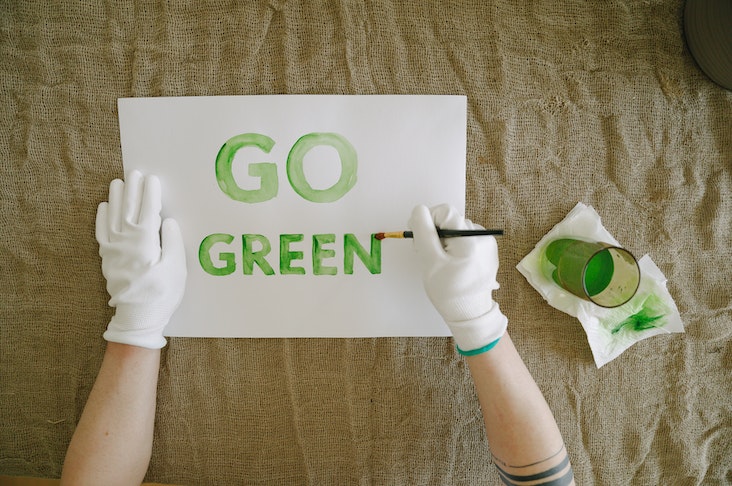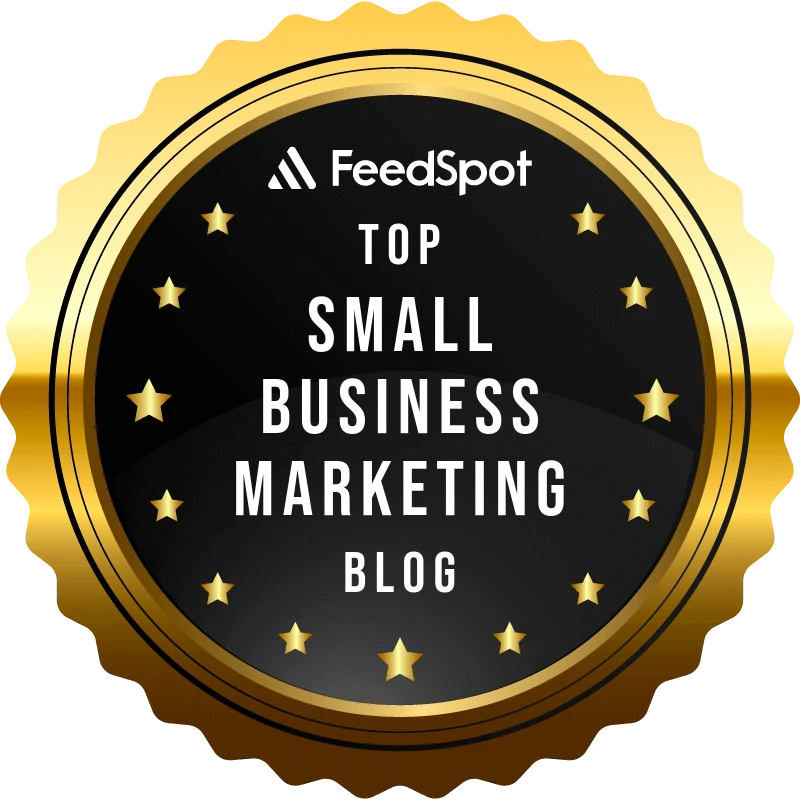
Green Marketing or Just Greenwashing? How to Get it Right
You’re a savvy business owner. You know people love to buy from businesses that care about the environment. So, you push some positive environmental messaging in your marketing but are hit with backlash!
People claim you’re greenwashing (making false or inaccurate environmental claims), so you go into crisis management mode to back up your claims and restore your ethical reputation.
From a marketing perspective, it can be a great strategy to discuss your ESG values, but it must be done honestly and ethically to avoid coming off as inauthentic or untruthful.
In this article, we’re going to share the differences between green marketing vs greenwashing, give examples of big brands who did it wrong, and share how your brand can avoid being greenwashed.
What is green marketing?
Green marketing is when a company promotes environmentally friendly or sustainable products and/or business practices. For example, if your packaging is made from 100% recycled paper products, and you share this in your marketing or brand-building initiatives, this is green marketing.
Some examples of green marketing include substantiated claims that your:
- Products are manufactured locally.
- Raw materials are certified to be from sustainable sources.
- People are paid a fair wage and provided with ethical working conditions.
- The company donates a percentage of profits to rainforest rehabilitation initiatives.
Benefits of green marketing
Aside from the obvious environmental and social benefits, consumers love to buy from businesses that ethically care for the environment and community. Other benefits of green marketing include:
- Attracting investors – 33% of millennial investors invest exclusively in companies with strong environmental values and initiatives.
- Attracts customers – 35% of consumers choose sustainable products over non-sustainable when possible. They also avoid plastic when they can and are willing to pay more for locally produced or sustainably produced food items.
What is greenwashing
Greenwashing is when a company is (purposefully or is perceived to be) making false claims about its green and sustainability initiatives. Sadly, it doesn’t matter if greenwashing allegations are true or false. They can have devastating effects on your business.
Here are some examples of greenwashing:
- Claiming your packaging is made from 100% recycled plastic (when it’s not or is less than 100%)
- Saying your product produces no harmful CO2 emissions, but it failed that certification test, or you never submitted for certification.
- Telling the world you have “strong environmental conservation values,” yet you don’t have any environmental standards or initiatives.
- Using words like “certified” when you’re not certified or accredited by a third party.
- Using vague words like eco-friendly, organic, natural, and green without the facts to support these claims.
What’s the difference between green marketing vs greenwashing
When comparing green marketing vs. greenwashing, marketing is when a company honestly lives up to its green and sustainability claims. It’s honest and transparent. Greenwashing is when a company does not live up to (or is perceived to live up to) its green and sustainability claims.
Sadly, companies with the best intentions in using sustainability messaging in their marketing can be seen as greenwashing if they don’t do it honestly or ethically.
Examples of greenwashing
More companies may be greenwashing than you’d think. According to an Akepa report, 60% of sustainability claims by fashion brands are greenwashing. They also report that 42% of companies’ sustainability credentials are exaggerated, false, or deceptive.
Here are some examples of actual companies who have greenwashed:
- H&M Clothing Brand: They promoted a “green” men’s shirt made from “100% organic cotton” as a sustainably made shirt. In fact, we know it takes about 20,000 litres of water to produce cotton, so critics questioned whether that is still considered an environmentally friendly shirt.
- McDonalds: In 2018, fast-food giant McDonald’s introduced paper straws to be more eco-friendly and recyclable. However, they were discovered to be too thick for recycling plants to process.
- Hefty Bags: This garbage bag brand came out with a new bag and their marketing had a strong indication that the bag itself was recyclable. A class action lawsuit found that Hefty knowingly misled the public, and these bags were not actually recyclable.
- Ikea: Ikea uses a lot of wood in its products, but in 2020, they were called out for not ethically sourcing its wood products. It was discovered that they were using illegally logged wood. In their defense, the wood they purchased was FSC certified, so this case also raised concerns about the FSC ethics and transparency.
- Ryanair: This discount airline made false claims regarding the emissions of their planes. Ryanair claimed to be the lowest emission airline in Europe, yet they were proven wrong, and their ads were pulled.
How to avoid being accused of greenwashing
There are a few ways to minimize your chances of someone accusing you of greenwashing. These include:
- Be specific with your words: Using ambiguous words like “green” can be misleading or misinterpreted. Same with words like “all-natural.” Instead, be specific about what aspects are green or all-natural and avoid ambiguities.
- Be transparent: Consumers expect transparency from brands. If you make a sustainability statement or claim, provide publicly available proof of your certification or accreditation. Don’t make it hard to find, or that makes you look suspicious, and people will doubt your authenticity and claim greenwashing.
- Be mindful of imagery: When using imagery or graphics for your brand, ensure they’re not suggestive of green or sustainability when you’re not. For example, don’t photograph your single-use coffee cups on a bed of flowers in a green meadow, as that may give the impression you have eco-friendly products when you don’t.
- Claims should match company values: Even if your product is the most eco-friendly and sustainably-sourced product on the planet, if your company headquarters is known for polluting local water streams, that misalignment in values can be labeled as greenwashing.
- Avoid making fake claims: Some businesses will do or say anything to make a sale, even if it’s not true. Avoid making up green claims just to make your product or brand look more attractive to buyers. The same goes for using fake accreditation logos on your materials.
- Back-up claims with data: When possible, back up your green claims with data, preferably from third parties like research companies. For example, if your T-shirts are made from 70% organic cotton, use a trusted third-party organization like the Sierra Club or Greenpeace to verify your statement. Keep this data as up-to-date as possible.
- Compare with like products: When comparing your product to a competitor, use a product as close as possible to yours. Don’t compare how your reusable bamboo cups are made with more sustainably sourced bamboo than the XYZ Corps T-shirt line.
How to recover from greenwashing accusations
Have you been accused of greenwashing? If you know these claims are false, there are many ways you can try to bounce back from any negative press, including:
- Sharing the facts (privately): For example, if someone accuses you of not using FSC-certified wood in your product, show them your Forest Stewardship Council (FSC) Certificate or proof that you obtained this certification.
- Sharing the facts (publically): If someone’s claims have affected your brand trust and image, start a campaign to promote your true green values and provide proof of these claims in the campaign.
You can also AACT to help protect against greenwashing claims in the future:
- Accountability: Be honest and transparent in all aspects of business.
- Accreditation: Seek third-party accreditation and certification to support any green or sustainability claims.
- Clear labeling and communication: Don’t use big complicated words just to sound smart. Use clear and specific language when making your green claims.
- Traceability: Consider how you can trace your supply chain with third-party QR codes to verify your claims.
Is digital marketing “green” marketing?
In many ways, digital marketing is a great tactic to use as part of your green and sustainable values. Here are a few ways digital marketing is greener than “traditional” marketing:
- Less paper waste: Have you ever attended a conference or event and came home with enough brochures and paper handouts to fill a three-inch binder? All that paper eventually ends up in the garbage or recycle bin.
Instead, consider creating a webpage brochure and printing a QR code people can scan to get to that webpage. Or, if you want a real, physical giveaway, print a small business card with your info and the QR code or website address of your brochure, rather than giving them your 20-page product catalogue.
You can take your green marketing step further and help eliminate tradeshow waste by being more mindful of the conference “swag” you give away at your booth. Instead of purchasing one-time use swag (like paper cups, pens, stickers, magnets), choose branded merch that’s sustainably made and won’t just get tossed in the trash like most conference swag).
Fairware is a great local branded merch company with many eco-friendly options for quality and sustainable products you can give away at tradeshows. They have sustainably sourced bags, notebooks, apparel, tech gadgets, upcycled products, and more.
- Use digital touchpoints: In the past, salespeople would drive door-to-door for meetings with prospective clients or to drum up new business. The pollution from driving around all day is harmful to the environment.
Instead, you can focus your marketing efforts online and reduce your carbon footprint. You can reserve those still important in-person and on-site visits to signed clients and customers or those who are further in the buyer’s journey.
- Attending virtual events: Conference and event platforms these days are so robust it nearly simulates the experience of actually being at the event. Some digital event software has digital meeting spaces (like Zoom rooms) where you can meet 1:1 or in groups with other attendees through text or video chat. You can watch seminars live from your computer too.
Look for niche conferences and events that have an online component. Consider buying a virtual booth to showcase your business, rather than the hassle, cost, and environmental impacts of lugging your people and materials to an actual trade show booth.
Are you using green marketing or greenwashing?
The Out-Smarts team can help you promote your green and sustainability values and features so you’re not accused of greenwashing. We’ll develop a custom strategy so you can get your message across clearly and unambiguously.
Book a free discovery call today to learn more about sharing your positive green message with the world.
Read more articles:


